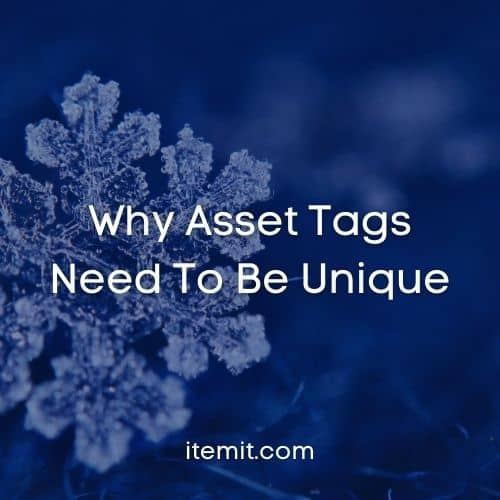When you’re implementing your asset tracking software, you’ll find that your assets need to be unique. Therefore, you’ll need to use unique asset tags to identify your assets.
This is why you might find that your barcodes aren’t working. As many barcodes contain pricing information, you may discover that they don’t scan into your asset tracking software properly.
You’ll need to use unique asset tags to track and manage your assets. This way, you’ll be able to maintain your data and keep a better eye over your assets.

Your Asset Tag Options
With simple asset management software, you’ll be able to tag your assets with a variety of different types of tag. Each tags have slightly different functionality and usage benefits.
Barcodes
Barcode asset tags are the most basic way to track your assets. Simply add your unique barcodes to your assets and scan them into your system. This way, you’ll be able to manage your assets quickly and with ease.
QR Codes
QR code asset tags work in a very similar way to barcodes; only they can hold more information. It’s much more transparent with QR codes, however, as you can guarantee uniquity with much greater ease.
QR codes and barcodes are also customisable, so you’ll be able to purchase metal asset tags to ensure that the assets going through wear and tear and weathering can still be accounted for.
To find out more about the differences between QR codes and barcodes, you can read our blog on QR codes Vs. Barcodes.
RFID Tags
RFID tags allow you to have more automation and scan from a greater distance. QR code asset tags and barcodes require a line of sight to scan. RFID tags, however, do not.
The caveat to this is that you’ll need to use external hardware to track and manage your RFID tags, as your phone won’t have a built-in RFID scanner.
However, when it comes to high-value asset tracking for example, RFID is much more viable as a use case, as you’ll be able to hide RFID tags in a way that you can’t hide QR codes or barcodes.
GPS Trackers
GPS trackers will give you the fullest functionality for asset management, as you’ll be able to track your assets in a hands-free, automated way.
Your GPS trackers will periodically update, showing you where your assets are. You’ll also be able to use geofencing to track when your assets are leaving certain locations, helping you mitigate theft and asset loss.
Why Do Asset Tags Need To Be Unique?
These asset tags need to be unique so that you can add certain, specific data to your assets. The ability to link unique assets to their tags allows you to track them as unique entities.
So, if an asset is damaged, you’ll be able to specify which asset is damaged and where it is thanks to this uniquity. In other words, you’ll scan the tag in your asset tracking app, updating the asset’s location and opening its unique profile. You’ll then be able to log the issue.
As the issue has been logged against a unique asset and the location data has been updating, the process of finding which asset is damaged and where it is becomes streamlined and simple.
To find out more about how itemit’s asset tracking system can make your life easier, you can book a demo of the system using the button below.
You can also contact the team at team@itemit.com or fill in the form below to start your 14-day free trial.
Why not check out these blogs:
How To Use An Anti-Theft Tool Tracker
Who Needs Fixed Asset Register Software?
Why Software Asset Management Is So Important
Use Your Own Asset Tags!
Start your free 14-day trial now
Instant access. No credit card details required.


